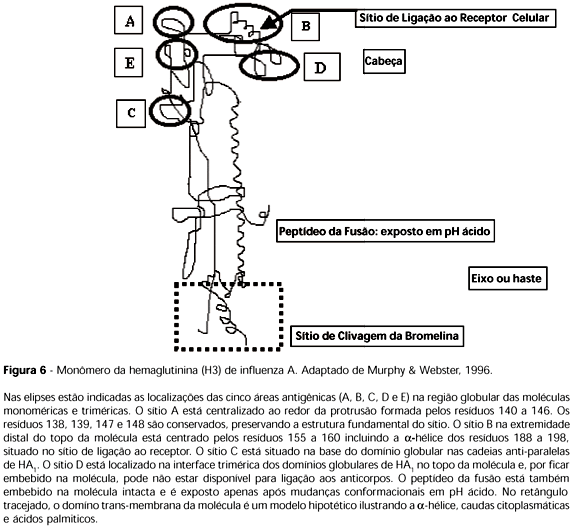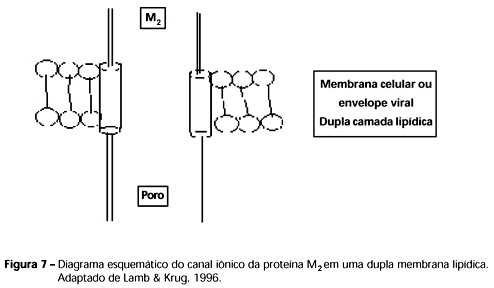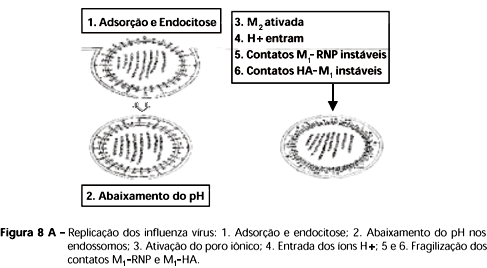Avian influenza is an exotic disease in the Brazilian poultry. The National Avian Health Surveillance Program (PNSA) maintains permanent monitoring of AVES of all domestic species, including imported genetic material for the poultry industry, for example chickens (Gallus gallus formadomestica), turkeys (Meleagris gallopavo formadomestica), quail (Coturnix coturnix japonica), ducks (Anas), elite, grand grandparent and grandparent stocks for layers and broilers, as well as species more recently exploited for production, for example, the exotic ostriches (Struthio camelus) or native rheas (Rhea americana). The breeding stocks are monitored by regular sampling for serology, virology and bacteriology, principally looking for Newcastle disease, influenza, salmonellas and mycoplasmas, as established by the PNSA, in addition to monitoring vaccination responses to, for example, infectious bursal disease and infectious bronchitis. The PNSA establishes the rules for the control and eradication of Newcastle disease and avian influenza (Projeto de Vigilância..., 2001), including the need for differential diagnosis, according to the following major actions: I. Notification of outbreaks (and laboratory confirmation at the LARA-Campinas); II. Sanitary assistance to the outbreaks; III. Disinfection and sanitation measures; IV. Sanitary slaughter; V. Sanitary depopulation; VI. Vaccination of flocks and emergency strategies; VII. Control and monitoring of susceptible flocks; VIII. Other sanitary measures; The active surveillance and outbreak attention policies require the diagnosis and differential diagnosis of ND and AI, following the code described by OIE and the PNSA, as follows: 1- Zoning, interdiction and sampling for laboratory confirmation; 2- Registry of AVES, including species, category and numbers; applicable to a 10 km radius: restriction to transportation of animals and materials possible source of infection and propagation; disinfection of sites of entry and exit to affected properties; epidemiological surveillance; 3- Laboratory confirmation by isolating and characterizing AIV: hemagglutinating agent isolated in SPF eggs not inhibited by NDV specific serum, characterized as AIV by detecting antigens of the nucleoprotein and/or matrix and subtyped by assaying for hemagglutinin and neuraminidase subtypes (immunodiffusion, enzyme immunoassays or molecular methodology); 4- Slaughter and cremation of all avian individuals, residues, meats and eggs of all affected and neighboring properties (3 km radius), cleaning and disinfection of premises; sanitary depopulation for 21 days (minimum). 5- Allow transportation for slaughter or incubation within the vigilance area (10 km radius). 6- Prohibit fairs, markets, expositions etc., within the vigilance area (10 km radius). 7- Apply these measures for a minimum of 21 days after disinfection (which follows slaughter, cremation and cleaning) and prohibit transportation of animals and residues/products of properties within the protection area (3 km radius) and for 15 days within the vigilance area (10 km radius). The certification of HPAIV area is according to OIE and PNSA regulations and considers Brazil as a free country, applicable as follows: 1- HPAIV is not diagnosed by the active surveillance for the last 3 years; 2- 6 months after an outbreak of HPAIV is diagnosed, birds and residues/products are destroyed. The major species (chickens and turkeys) maintained in the Brazilian poultry industry employ the state-of-the-art production technology. Flocks are managed with the forefront knowledge in biosecurity, housing, permanent evaluation of critical points and quality and vaccination programs, which guarantee the prevention of most health problems. The geographic localization of the Brazilian poultry industry may also play a role in the absence of influenza outbreaks, in addition to the lower rate of replication of AIV in migratory birds during their subtropical season. Migratory routes may also concentrate in areas not occupied by poultry industry. Added to that, the biosecurity/housing and quality system of the industry may represent the step further to prevent health problems caused by transmissible infectious diseases such as influenza, considering that, for instance, all chicken and turkey industrial flocks are kept in houses, in contrast to open field farming, especially for ducks, geese and turkeys, kept on migratory routes of countries facing influenza problems.
Avian influenza; virus; avian (Aves); broilers; vaccine









